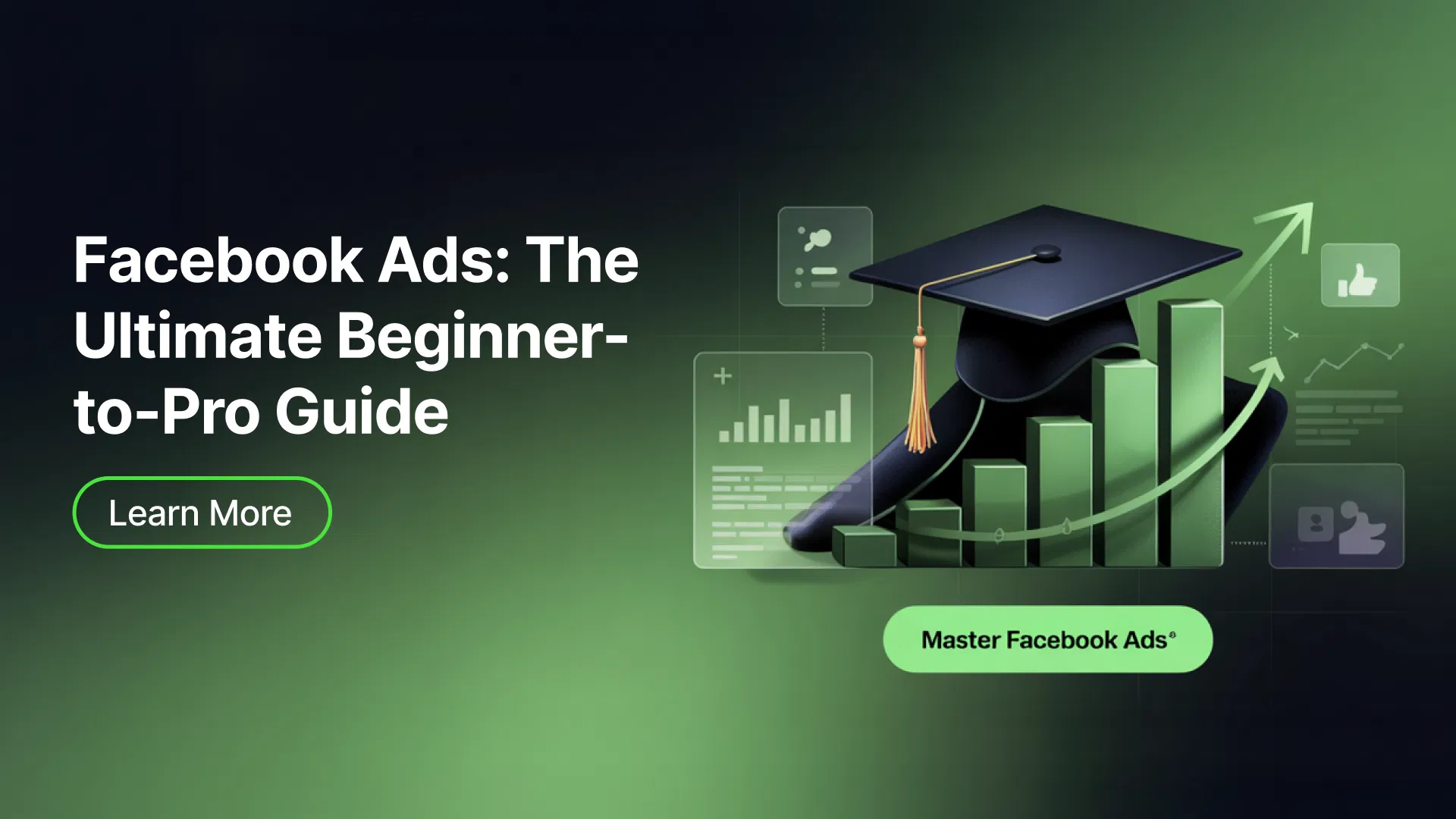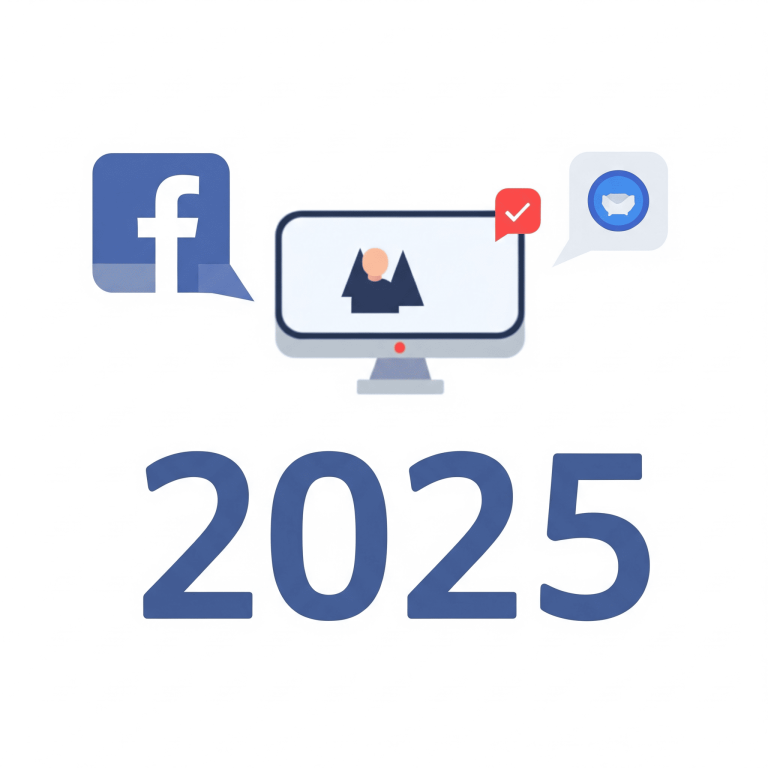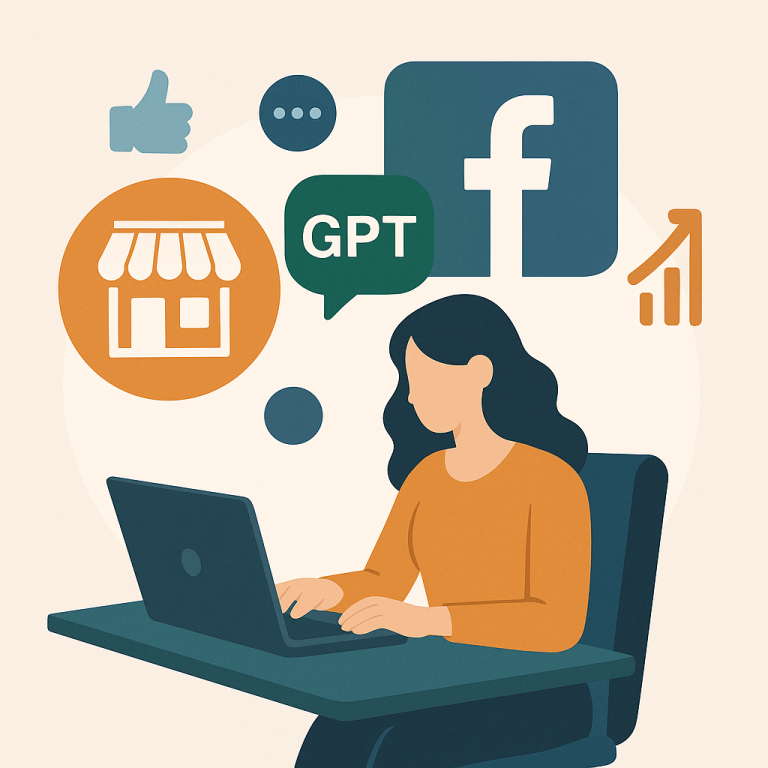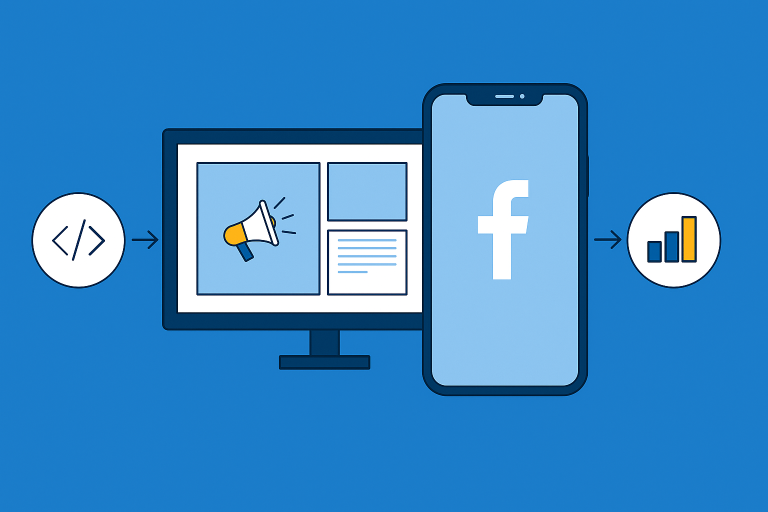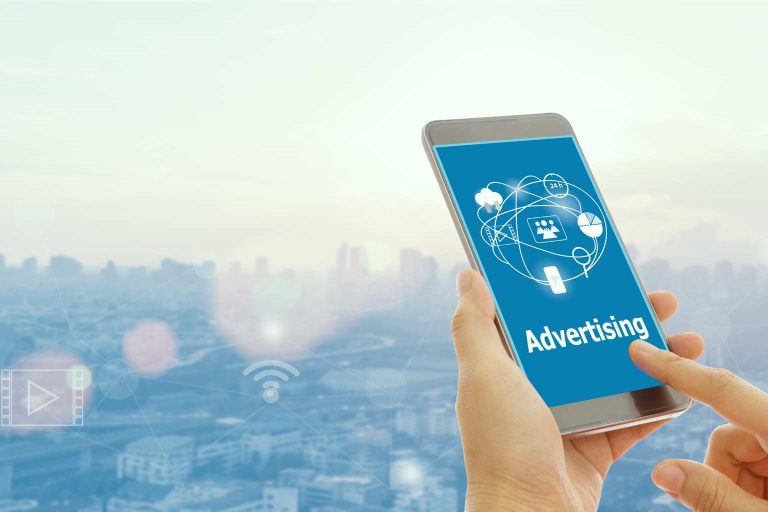Facebook Ads Made Simple: From Beginner to Pro
Each month, over 3 million businesses leverage Facebook’s advertising platform to reach their target audience, and it’s easy to see why. With access to more than 3 billion users across Facebook, Messenger, and Instagram, the platform offers unparalleled reach and visibility.
But the real power of Facebook advertising lies in its advanced features — including the ability to create custom audiences, automate ad delivery, and drive meaningful customer engagement that leads to conversions. With smart automation tools and robust audience targeting options, Facebook Ads help businesses maximize ROI and scale their marketing efforts efficiently.
Table of Contents
- What Are Facebook Ads?
- Step-by-Step: How to Set Up a Facebook Ads
- Why You Should Be Using Facebook Ads
- Facebook Ad Formats Explained
- Audience Targeting Demystified
- Budgeting, Bidding & Cost Structure
- Measuring Performance Like a Pro
- Mistakes to Avoid
- What’s Next for Facebook Ads in 2025?
- Conclusion
What Are Facebook Ads?

Let’s simplify further explain it:
Ads on Facebook are advertisements from companies that show up in the feeds, stories, or messages of potential customers on Facebook, Instagram, and Messenger.
Unlike organic posts where followers and timing matter, these ads are driven by targeting which allows complete control over who, when, and where your message will be displayed.Facebook Ads are an excellent vehicle for promoting goods and services and targeting specific audiences.
The platform affords unparalleled access to a broad demographic population, with more than 2.9 billion monthly active users. Yet, an understanding of the ad system’s mechanics is essential before starting to build ads.
What is so compelling about Facebook Ads is the fact that they spread across numerous platforms. Due to Meta’s universe, your advert can also appear on:
Instagram
Messenger
Audience Network
Whether you’re conducting Facebook marketing for beginners or an advanced eCommerce advertising campaign, the system is geared towards providing you complete flexibility—from defining objectives to measuring performance.
How to Set Up Facebook Ads Campaign Step-by-Step
Step 1: Access Ads Manager

Getting into Ads Manager is the starting point for launching any Facebook (Meta) advertising campaign. It’s your main place to create, manage, and see how all your ads on Facebook, Instagram, Messenger, and Audience Network are performing.
Step 2: Choose Your Objective
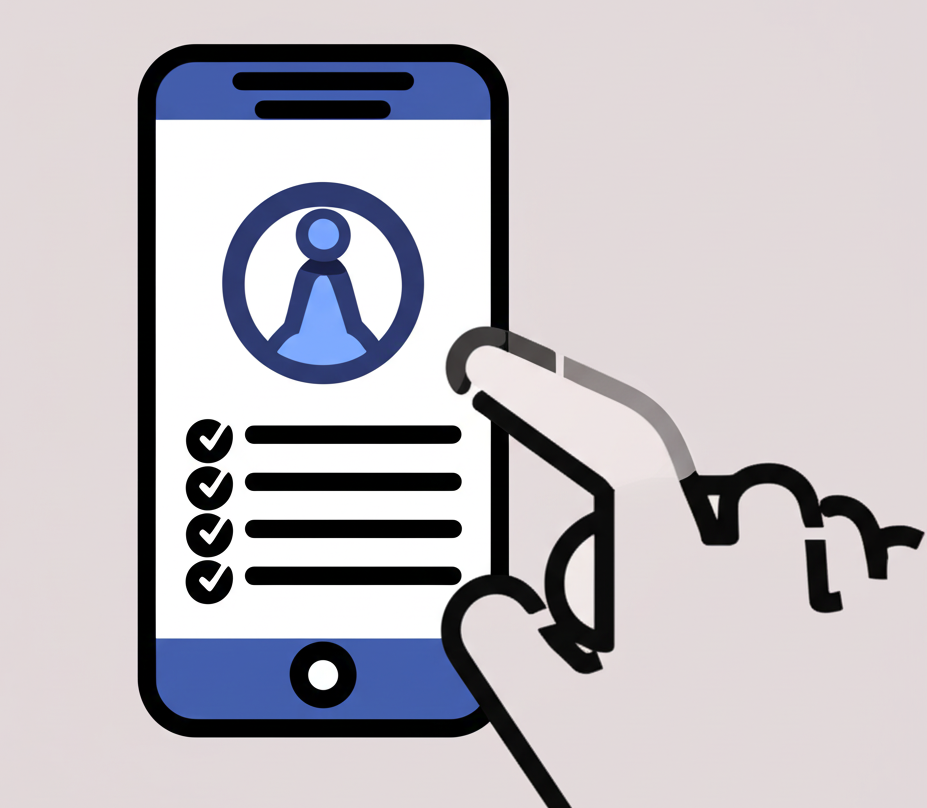
1. Awareness Objectives
These objectives are about generating interest in product, service, or brand at the top of the funnel. They aim to increase visibility and recall.
2.Conversion Objectives
These objectives encourage people interested in business to take a specific, valuable action, often culminating in a sale or direct interaction with business.
3.Consideration Objectives
These objectives encourage people to think about business and seek more information.
Step 3: Define Your Audience

1. Core Audiences :
This is where you define your audience based on criteria directly available within Meta’s platform, drawing from vast amounts of user data.
2. Custom Audiences
These audiences allow you to re-engage with people who have already interacted with your business or who you have data on
3. Lookalike Audiences
Once have a Custom Audience ( “source audience”), can leverage Meta’s AI to find new people who are similar to them.
Step 4: Set Your Budget and Schedule

1. Budget Types
two primary options when setting your budget for an ad set or campaign:
- Daily Budget:The average amount you’re comfortable spending on your ad set each day.
- Lifetime Budget:The total maximum amount you’re willing to spend over the entire duration of your ad set or campaign.
2. Facebook Ads Campaign Budget Optimization (CBO) Guide
While not a budget type itself, CBO (now often referred to as Advantage Campaign Budget) is a powerful strategy for budget allocation.
Set Start and End Dates: You define a specific start date and time, and an end date and time, for your campaign or ad set.
3. Scheduling Options
- Continuous Run: Your ads will start running immediately and continue indefinitely until you manually pause or stop them.
- Set Start and End Dates: You define a specific start date and time, and an end date and time, for your campaign or ad set.
- Ad Scheduling (Dayparting): This advanced option allows you to specify particular hours of the day and days of the week when you want your ads to run.
Reasons to Advertise on Facebook
Facebook (Meta) Ads have become an indispensable tool for businesses of all sizes due to their unparalleled reach, sophisticated targeting, and measurable results.
Huge Audience Reach: With more than a billion active users on Facebook, Instagram, Messenger, and Audience Network, Meta platforms provide access to a huge global population.
Accurate Targeting of the Right Audience: This is arguably the strongest benefit. Meta’s rich data setting enables extremely detailed targeting by demographics (location, gender, age), interests (brands they’re following, hobbies), behaviors (device, purchasing history), and even people connected to your own pages or apps.
Varied Ad Formats for All Purposes: Whether you want to make a striking image and video ad, interact with users through carousel, collection, and lead generation ads, Meta presents a broad range of formats.
Cost-Effectiveness and Budgetary Flexibility: With regard to conventional advertising, Facebook Ads may be extremely affordable. You are in full control of your budget, allocating daily or lifetime spend, and only having to pay for the actions you prioritize
Measurable Outcomes and Optimization: Ads Manager gives you solid analytics, with real-time information on how your campaign is performing – reach, engagement, click-through rates, conversions, and more.
Full-Funnel Marketing Capabilities: Facebook Ads enable you to support your marketing for each step in the customer journey. You can do campaigns to put your brand in front of people (awareness), build leads (consideration), and generate direct sales.
Understanding Facebook Ad Formats
Facebook Ads provide varied formats to match many marketing objectives.
Image Ads: The simplest and most foundational ad format. It consists of a single static image, accompanied by ad copy, a headline, a description, and a call-to-action (CTA) button.
Video Ads : Features a single video, allowing for more dynamic storytelling than a static image. Videos can range from short, attention-grabbing clips to longer narratives.
Carousel Ads:Allows you to display 2 to 10 scrollable images or videos within a single ad unit.
Audience Targeting Demystified
Core Audiences (Detailed Targeting): This is the most common starting point, where you define your audience based on criteria available directly within Meta’s platform.
Custom Audiences: This allows you to re-engage with people who have already shown interest in your business, making them highly valuable.
Lookalike Audiences: Once you have a Custom Audience can create a Lookalike Audience. Meta’s AI analyzes the characteristics of your source audience
Why Audience Targeting is Crucial: Increased Relevance Your ads are shown to people genuinely interested, leading to higher engagement (CTR) and better conversion rates.
Facebook Ads Budgeting, Bidding Strategies, and Cost Management
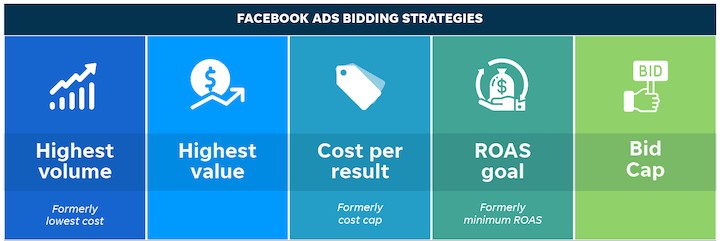
Facebook Ads budgeting is done by creating a daily budget (average cost per day) or lifetime budget (cumulative cost over the life of a campaign). This is what manages your total cost.
Regardless of your budget, Facebook offers the flexibility to run successful —whether you’re spending ₹500 per day or ₹4,00,000..
Daily Budget: This is the average amount you’re willing to spend on an ad each day.
Lifetime Budget:This is the total amount you’re willing to spend over the entire duration of your campaign or ad set.
Campaign Budget Optimization (CBO) / Advantage Campaign Budget:This isn’t a separate budget type in terms of daily vs. lifetime, but rather a strategy for budget allocation.
How to Track and Optimize Facebook Ad Performance
Measuring your Facebook (Meta) Ad performance like a pro involves understanding key metrics and consistently optimizing your campaigns. Here are the points to consider:
- Define Clear KPIs (Key Performance Indicators):
- Before launching, know what success looks like. Is it website traffic, leads, sales, app installs, or brand awareness
- Align your KPIs with your initial campaign objective (e.g., if the objective is “Conversions,” then “Cost Per Conversion” is a key KPI).
Understand Core Metrics:
- Reach: The number of unique people who saw your ad.
- Impressions: The total number of times your ad was displayed
- Frequency: Impressions divided by Reach.
- Clicks (Link Clicks): The number of times people clicked on your ad’s link.
- Click-Through Rate (CTR): Clicks divided by Impressions
- Cost Per Click (CPC): Total Spend divided by Link Clicks
- Conversions: The number of desired actions taken
Set Up Facebook Pixel/Conversions API Correctly:
- This is fundamental for tracking website actions and attributing them to your ads.
- Conversions API offers more reliable data tracking, especially with privacy changes.
A/B Testing (Split Testing):
- Continuously test different variables (ad creative, headlines, audiences, placements)
- This iterative process helps optimize your campaigns over time.
Optimize Based on Data:
- If a specific audience segment is underperforming, adjust your targeting.
- If an ad creative has a low CTR, replace it with a new one.
Look Beyond Last-Click Attribution:
- Understand that Facebook’s attribution windows can vary. Consider the full customer journey and how ads contribute at different touchpoints, not just the final click
Common Facebook Ads Mistakes and How to Fix Them
When running Facebook Ads, avoiding common pitfalls can save you significant time and money. Here are three critical mistakes to steer clear of:
Not Defining a Clear Objective or Target Audience:
- Mistake: Launching ads without a specific goa
Ignoring Ad Creative and Ad Fatigue:
- Mistake: Using bland, unengaging visuals or copy, or running the same ad for too long without refreshing it.
Failing to Track Conversions or Optimize Campaigns:
- Mistake: Not setting up the Facebook Pixel (or Conversions API) to track actions on your website, or launching an ad and then never checking its performance.
Future Trends and Innovations in Facebook Advertising for 2025
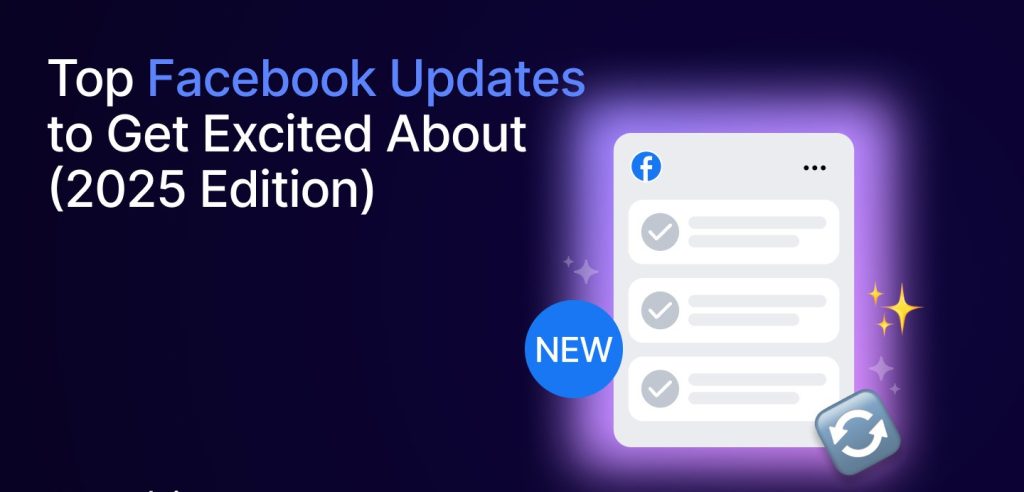
Here’s what’s next for Facebook (Meta) Ads in 2025 and beyond:
- Further Advancements in AI and Automation: Meta continues to heavily invest in AI, which will further automate and optimize campaign management
Emphasis on Privacy-Centric Measurement and Attribution: With ongoing privacy regulations (like GDPR and CCPA) and platform changes (like Apple’s App Tracking Transparency), Meta will continue to evolve its measurement solutions.
Deeper Personalization with User Control: As AI advances, ads will become even more personalized based on user behavior and preferences.
Final Thoughts on Maximizing Success with Facebook Ads
Facebook (Meta) Ads represent the indispensable backbone of contemporary digital advertising, providing companies with unparalleled growth opportunities. Their greatest strength is targeting a massive international audience with pinpoint precision through advanced targeting mechanisms that range far beyond simple demographics to reflect in-depth interests and actions.
The varied ad units and goal-based campaign types of the platform offer tremendous flexibility so that firms can adapt their strategy whether it is about brand awareness, site traffic, lead acquisition, or direct purchase. Most importantly, success hinges on strategic implementation: setting precise targets, continuous optimization through data-driven recommendations.
In the future, Meta Ads will continue to evolve with more AI automation, a greater focus on privacy-compliant measurement, growth in immersive video content, and new opportunities in the metaverse.

